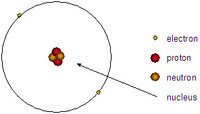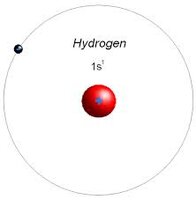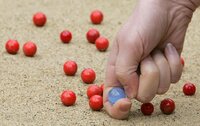Cheers for the reply,
I can see exactly where your coming from about the NO3 and I do apologise, I have no idea why I fear it, even though I trust exactly what your saying, just before purchasing my first ever tank I got a little bit into keeping Koi in my pond, and all I ever heard being repeated was remove as much Nitrate as you can even if you can get it 10-20ppm which was impossible for me to achieve in my pond, obviously I now know my test kit is inaccurate, but its just annoying, I don't know, its stupid really like you say. I can only presume it is fear and that's another reason I had to ask you how high does have to be to become toxic. I am running low on K2SO4 and I will take your advice and I will add the full amount of KNO3 to my mix. Sorry if it sounds like I wasn't listening, but I am taking in everything, and I guess its annoying especially for me when I hear how people control there nitrates as if its life or death, for example Koi keepers, and say shrimp keepers. I know shrimp may be a different story, but Koi are surely more hardier than tropical fish, and then again these test kits are totally wrong in the first place, I guess its harder for me when I'm the guy with the high readings and not the low readings that 9/10 people seem to get when I look at there results and I can't get my head around the calibrating thing. I will listen though and I will add the KNO3, the full amount as I know I am cleaning my filters, tank, so the readings have to be wrong.
I can only presume the GSA is because of low PO4 as you mentioned it can be combination of low PO4 and low co2, but I would more say its due to low PO4 which the CO2 exposed.
Cheers for the tip on the Glosso, I will be honest and say I have no idea what I am doing with it, I look at the plant in Google images, it seems to grow low, and spreads a nice carpet, I know mine will grow up towards the light, but how do I plant or spread this plant, I see hardly no roots, I can't really identify any runners. I will do some research on it and see how to propagate it.
I will have a browse around and see how I take the PH approach to measuring CO2 stability, once again I'm still learning, I could ask you 1000's of questions but I don't want to annoy you lol. I know my PH has dropped about 1 by the CO2, I presume I just monitor it through out the day for any changes to get an idea of the consistency of the CO2, then again PH is not easiest thing to tell by the API colour chart.
I can see exactly where your coming from about the NO3 and I do apologise, I have no idea why I fear it, even though I trust exactly what your saying, just before purchasing my first ever tank I got a little bit into keeping Koi in my pond, and all I ever heard being repeated was remove as much Nitrate as you can even if you can get it 10-20ppm which was impossible for me to achieve in my pond, obviously I now know my test kit is inaccurate, but its just annoying, I don't know, its stupid really like you say. I can only presume it is fear and that's another reason I had to ask you how high does have to be to become toxic. I am running low on K2SO4 and I will take your advice and I will add the full amount of KNO3 to my mix. Sorry if it sounds like I wasn't listening, but I am taking in everything, and I guess its annoying especially for me when I hear how people control there nitrates as if its life or death, for example Koi keepers, and say shrimp keepers. I know shrimp may be a different story, but Koi are surely more hardier than tropical fish, and then again these test kits are totally wrong in the first place, I guess its harder for me when I'm the guy with the high readings and not the low readings that 9/10 people seem to get when I look at there results and I can't get my head around the calibrating thing. I will listen though and I will add the KNO3, the full amount as I know I am cleaning my filters, tank, so the readings have to be wrong.
I can only presume the GSA is because of low PO4 as you mentioned it can be combination of low PO4 and low co2, but I would more say its due to low PO4 which the CO2 exposed.
Cheers for the tip on the Glosso, I will be honest and say I have no idea what I am doing with it, I look at the plant in Google images, it seems to grow low, and spreads a nice carpet, I know mine will grow up towards the light, but how do I plant or spread this plant, I see hardly no roots, I can't really identify any runners. I will do some research on it and see how to propagate it.
I will have a browse around and see how I take the PH approach to measuring CO2 stability, once again I'm still learning, I could ask you 1000's of questions but I don't want to annoy you lol. I know my PH has dropped about 1 by the CO2, I presume I just monitor it through out the day for any changes to get an idea of the consistency of the CO2, then again PH is not easiest thing to tell by the API colour chart.





 , as I know that's ridiculous, but how do I work out the ppm in my tank of something shown on the water report so I don't look stupid, the key they gave was this:
, as I know that's ridiculous, but how do I work out the ppm in my tank of something shown on the water report so I don't look stupid, the key they gave was this:
